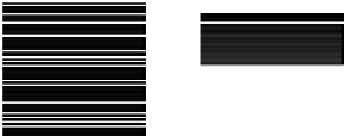Environmental Engineering Reference
In-Depth Information
Biogas
Biogas
Effluent
1
st
phase-load
2
nd
phase-digestion
3
rd
phase-settling
4
th
phase-unload
FIGure 32.4
Batch ASBR process schematic.
Process cycle
Reactor 1
New batch
phase 1
Self-recirculation
phase 2
Old batch
phase 3
Self-recirculation
phase 4
Coupling
Coupling
Load
Unload
Old batch
phase 3
Reactor 2
Self-recirculation
phase 4
New batch
phase 1
Self-recirculation
phase 2
Unload
Load
Coupling old-new batch
Self-recirculation
FIGure 32.5
Batch solid anaerobic digestion scheme.
once and degrades without any interference until the end of the cycle phase. This leads to temporal
variation in microbial community and biogas production. Therefore, batch processes require more
precise measurement and monitoring equipment to function optimally. Usually, these reactors are
at least built in pairs, sometimes even in higher numbers. This achieves a more steady flow of
biogas for instant use. The tank is usually emptied between the cycles to a certain exchange volume,
which in case of anaerobic digestion is rarely more than 50% of total reactor volume. The residue
in the tank is microbial inoculum for the next cycle. This makes batch reactors more voluminous
than conventional continuous reactors; however, they do not require equalization tanks and the
total reactor volume is usually less than in conventional processes. They can be coupled directly
to the waste discharge; however this limits the use to more industrial processes (for example food
industry) and less to farm waste production. The typical cycle time is 1 week.














































































